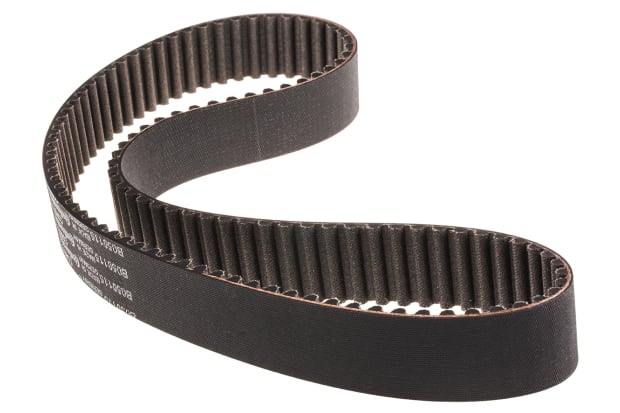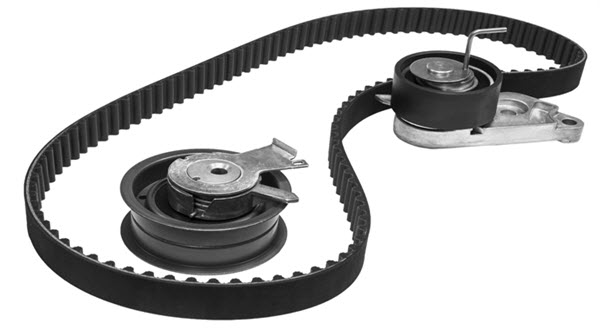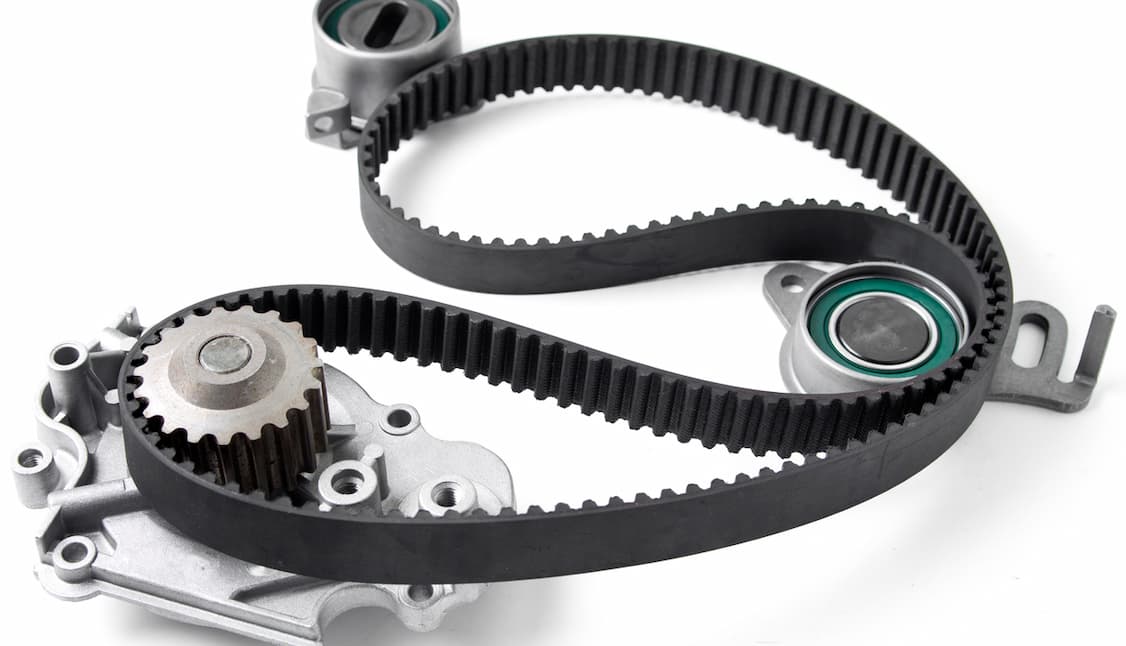Product Description
Wrapped V BELT
. Classical Wrapped V Belt
Features
Wrapped V-belts feature high strength, low protraction, small matching tolerance and a fatigue endurance limit of over 10 million times. Suitableall industrial light duty applications, usually using fractional horsepower motors, plant protection machinery such as lawn mowever, wool conveyror, carton packing machine andother fields requiring strict enviromental protection.
Structure
1. Cover fabric, made of cotton fabric and polyester fabric, to protect the inner parts of the belts and provide strong abrasion on the pulley groove.
2. Tension member, made of polyester and Kevlar cord, to provide the transmission power.
3. Top compression rubber, Adhesive rubber, Bottom compression rubber, made of NR, CR, SBR, to maintain the belt shape and protect tension meber adhesion.
Marking
The marking of classical wrapped V-belts represent both the inside length, pitch length of factory v belts or outer length. The length conversion label is available for conversion between various models.
Metric System: A 1321Li 1351Ld means A type, pitch length is 1351mm, and inside length is 1321mm.
Inch System: B 50 Li means B type, inside length 50 inches inner length.
. Classical Wrapped V Belt
| Type | Top width | Pitch width | Height | Angel | Length conversion | Length Range inch |
Length Range mm |
| Z | 10 | 8.5 | 6 | 40º | Li=Ld-22 | 13″-120″ | 330-3000 |
| A | 13 | 11.0 | 8 | Li=Ld-30 | 14″-394″ | 356-10000 | |
| AB | 15 | 12.5 | 9 | Li=Ld-35 | 47″-394″ | 1194-10000 | |
| B | 17 | 14.0 | 11 | Li=Ld-40 | 19″-600″ | 483-15000 | |
| BC | 20 | 17.0 | 12.5 | Li=Ld-48 | 47″-394″ | 1194-10008 | |
| C | 22 | 19.0 | 14 | Li=Ld-58 | 29″-600″ | 737-15240 | |
| CD | 25 | 21.0 | 16 | Li=Ld-61 | 47″-394″ | 1194-10008 | |
| D | 32 | 27.0 | 19 | Li=Ld-75 | 80″-600″ | 2032-15240 | |
| E | 38 | 32.0 | 23 | Li=Ld-80 | 118″-600″ | 2997-15240 | |
| F | 50 | 42.5 | 30 | Li=Ld-120 | 177″-600″ | 4500-15240 |
Special Sections
| Type | Top Width mm | Thickness mm | Angle | Type | Top Width mm | Thickness mm | Angle |
| 3L | 9.8 | 5.6 | 40 | K | 8 | 6 | 40 |
| 4L | 12.7 | 8 | 40 | D22 | 14 | 7.5 | 40 |
| 5L | 16.8 | 10.5 | 40 | D24 | 14 | 8 | 40 |
| Y | 6 | 4 | 40 | D32 | 32 | 16 | 40 |
| MF | 9.5 | 8 | 40 | D20 | 20 | 12.5 | 40 |
. Wedge Wrapped V Belt
Wedge/narrow wrapped v belt feature high transverse strength, warping strength, large transmission power 50-80% than classical wrapped v belt, transmission limit speed of 40m/s and transmission efficiency of more than 95%.
| Type | Top Width | Pitch Width | Height | Angle | Length Coversion | Length Range Inch | Length Range mm |
| 3V/9N | 9.5 | – | 8.0 | 40 | La=Li+50 | 16″-200″ | 406-5080 |
| 5V/15N | 16.0 | – | 13.5 | 40 | La=Li+82 | 44″-394″ | 1100-10008 |
| 8V/25N | 25.5 | – | 23.0 | 40 | La=Li+144 | 75″-600″ | 1905*15240 |
| SPZ | 10.0 | 8.0 | 8.0 | 40 | La=Li+50 | 16″-200″ | 406-5080 |
| SPA | 13.0 | 11.0 | 10.0 | 40 | La=Li+63 | 23″-200″ | 600-5080 |
| SPB | 17.0 | 14.0 | 14.0 | 40 | La=Li+88 | 44″-394″ | 1118-10008 |
| SPC | 22.0 | 19.0 | 19.0 | 40 | La=Li+113 | 71″-600″ | 1800-15240 |
Example of Marking
SPA 2250La / 2232Ld, Type is SPA, Outer length is 2250mm, Pitch length is 2232mm
5V 900 / 15N2286La, Type is 5V / 15N, Imperial outerside length is 90 inches, Metric outside length is 2286mm.
Application
Crushers, compressors, blending systems, combine harvesters, choopers, launmowers, scarifiers,
. Banded V Belt
Banded v belt works for heavy duty industrial machinery and equipment with high strength, durability and performance.
. Agricultural V Belt & Hexagonal Belt
The other series rubber belts available:
Raw edged /Cogged V Belt, Ribbed / Poly V Belt, Timing / Synchronous Belt, Elevator Belt, Flat Transmission Belt, Conveyor Belt, etc
Material:
Production & Mould
Testing & Laboratory
Packing & Delivery
FAQ
Q1. Can I have a sample order?
Yes, any sample order is welcome to know the quality of our products.
Q2. What about the lead time of the sample or the final order?
2-5 days for normal sample.
25-40 days for a formal order.
Q3. How much is the minimum quantity for each item in 1 order?
One CZPT quantity is ok. Usually around 50pcs for small item, 10pcs for big item.
Q4. Is it possible to print our logo or brand on the belt?
Yes, we can print your logo or design on the belt after receipt of your formal authorization letter of the logo or your brand.
Q5. Do you offer the guarantee for your product?
Yes, usually we offer 1 year warranty for all of our products.
/* January 22, 2571 19:08:37 */!function(){function s(e,r){var a,o={};try{e&&e.split(“,”).forEach(function(e,t){e&&(a=e.match(/(.*?):(.*)$/))&&1
| Standard or Nonstandard: | Standard |
|---|---|
| Application: | Textile Machinery, Garment Machinery, Conveyer Equipment, Electric Cars, Motorcycle, Food Machinery, Marine, Mining Equipment, Agricultural Machinery, Car |
| Feature: | Anti-Static, Oil-Resistant, Heat-Resistant, Wear-Resistant, High Temperature-Resistance |
| Samples: |
US$ 0.1/Piece
1 Piece(Min.Order) | Order Sample |
|---|
| Customization: |
Available
| Customized Request |
|---|
.shipping-cost-tm .tm-status-off{background: none;padding:0;color: #1470cc}
|
Shipping Cost:
Estimated freight per unit. |
about shipping cost and estimated delivery time. |
|---|
| Payment Method: |
|
|---|---|
|
Initial Payment Full Payment |
| Currency: | US$ |
|---|
| Return&refunds: | You can apply for a refund up to 30 days after receipt of the products. |
|---|

What role do materials and coatings play in the performance and longevity of V-belt tensioners?
Materials and coatings play a significant role in the performance and longevity of V-belt tensioners. The choice of materials and the application of appropriate coatings can greatly impact the durability, reliability, and overall effectiveness of the tensioners. Here’s a detailed explanation of the role materials and coatings play in the performance and longevity of V-belt tensioners:
- Material Selection:
- Coatings:
- Zinc or Chrome Plating: These coatings provide excellent corrosion resistance, protecting the tensioner from environmental factors, such as moisture and chemicals. They also enhance the aesthetic appearance of the tensioner.
- Powder Coating: Powder coating is a durable and long-lasting coating option that provides corrosion resistance and improved wear resistance. It can also offer a variety of color options to match specific design requirements.
- Teflon or PTFE Coating: Teflon or PTFE (Polytetrafluoroethylene) coatings offer low friction properties, reducing wear and extending the life of the tensioner. These coatings are particularly useful in applications where minimizing friction and energy losses are critical.
- Ceramic Coating: Ceramic coatings provide excellent hardness and wear resistance. They are often used in high-performance applications where the tensioner is subjected to severe wear and abrasive conditions.
- Benefits for Performance and Longevity:
- Increased Wear Resistance: High-quality materials and coatings can significantly improve the wear resistance of tensioners, reducing the rate of wear and extending their service life. This is particularly important in applications with high belt speeds, heavy loads, or abrasive environments.
- Enhanced Corrosion Protection: Coatings, such as zinc or chrome plating, provide effective corrosion protection, preventing rust and degradation of the tensioner in humid or corrosive environments.
- Reduced Friction: Coatings, such as Teflon or PTFE, reduce friction between the tensioner and the belt, minimizing heat generation and energy losses. This improves the efficiency of the V-belt system and reduces wear on both the tensioner and the belt.
- Improved Surface Hardness: Coatings, such as ceramic coatings, enhance the surface hardness of tensioners, making them more resistant to wear and abrasion. This results in longer-lasting tensioners that can withstand demanding operating conditions.
The selection of materials for V-belt tensioners is crucial as they need to withstand the demanding operating conditions encountered in V-belt systems. High-quality materials with excellent mechanical properties, such as strength, hardness, and wear resistance, are typically chosen. Common materials used for tensioners include metals, such as steel or cast iron, and advanced polymers, such as thermoplastics or thermosetting plastics.
Metal tensioners offer high strength and rigidity, making them suitable for heavy-duty applications with high tension loads. They are also resistant to temperature variations and provide stability under demanding conditions. Polymer tensioners, on the other hand, offer advantages such as lightweight, corrosion resistance, and reduced noise and vibration transmission. The choice between metal and polymer materials depends on the specific requirements of the V-belt system and the operating environment.
Coatings are often applied to the surfaces of V-belt tensioners to enhance their performance and extend their longevity. Coatings provide several benefits, such as improved wear resistance, corrosion protection, reduced friction, and enhanced surface hardness. Here are some commonly used coatings for V-belt tensioners:
The choice of materials and coatings in V-belt tensioners directly impacts their performance and longevity. Here are the key benefits they provide:
In summary, materials and coatings play a vital role in the performance and longevity of V-belt tensioners. The selection of high-quality materials and appropriate coatings ensures that tensioners can withstand the rigors of V-belt systems, resist wear and corrosion, reduce friction, and maintain their effectiveness over an extended service life. Considering the specific requirements of the application and the operating environment, manufacturers choose materials and coatings that optimize the performance and longevity of V-belt tensioners, ultimately contributing to the reliable operation of the V-belt system.

How do innovations and advancements in V-belt tensioner technology impact their use?
Innovations and advancements in V-belt tensioner technology have a significant impact on their use, leading to improved performance, increased reliability, and enhanced efficiency in various applications. Here’s a detailed explanation of how innovations and advancements in V-belt tensioner technology impact their use:
- Enhanced Tensioning Mechanisms:
- Increased Durability and Reliability:
- Reduced Friction and Energy Losses:
- Integration of Diagnostic and Monitoring Features:
- Application-Specific Customization:
New technologies and design innovations have led to the development of enhanced tensioning mechanisms in V-belt tensioners. These mechanisms offer improved accuracy and consistency in applying the desired tension force to the belts. Advanced tensioner designs may incorporate features such as self-adjusting mechanisms, automatic tension control, or adaptive tensioning systems. These advancements simplify the tensioning process, reduce manual adjustments, and ensure optimal tension levels, leading to improved system performance and reduced maintenance requirements.
Advancements in materials, manufacturing processes, and engineering techniques have resulted in V-belt tensioners with increased durability and reliability. New materials with improved strength and wear resistance, such as advanced polymers or specialized alloys, are being utilized in tensioner construction. Additionally, innovative manufacturing methods allow for tighter tolerances, precise assembly, and better overall quality control. These advancements result in tensioners that can withstand higher loads, resist wear and fatigue, and operate reliably even in demanding environments, enhancing the longevity and reliability of V-belt systems.
New technologies and advancements in V-belt tensioner design have focused on reducing friction and energy losses during power transmission. Friction-reducing coatings, specialized bearing systems, and optimized contact surfaces are employed to minimize energy losses due to belt-pulley interaction. These advancements result in improved power transmission efficiency, reduced heat generation, and lower energy consumption. By reducing friction and energy losses, innovative tensioner technologies contribute to energy savings, lower operating costs, and improved overall system efficiency.
Advancements in V-belt tensioner technology include the integration of diagnostic and monitoring features. Tensioners may incorporate sensors or indicators that provide real-time data on tension levels, belt wear, or system performance. This allows users to monitor the condition of the tensioner and the entire power transmission system, enabling proactive maintenance and preventing unexpected failures. Diagnostic and monitoring capabilities enhance system reliability, optimize maintenance schedules, and reduce downtime, leading to improved operational efficiency.
Advancements in V-belt tensioner technology have facilitated application-specific customization. Manufacturers can now design tensioners to meet the unique requirements of different industries and applications. Customizable features include tensioning force, size, mounting options, and specialized coatings. This flexibility allows for better integration into specific systems, addressing space constraints, load demands, and environmental conditions. Application-specific customization improves overall system performance, reliability, and compatibility.
In summary, innovations and advancements in V-belt tensioner technology have a profound impact on their use. Enhanced tensioning mechanisms, increased durability and reliability, reduced friction and energy losses, integration of diagnostic and monitoring features, and application-specific customization all contribute to improved performance, reliability, efficiency, and compatibility. These advancements enable more efficient power transmission, longer service life, reduced maintenance requirements, and enhanced overall performance of V-belt systems in various industrial and automotive applications.

How do V-belt tensioners differ from other types of belt tensioners in terms of design and application?
V-belt tensioners differ from other types of belt tensioners in terms of their design and application. While there are various types of belt tensioners used in different systems, V-belt tensioners are specifically designed to accommodate the unique characteristics and requirements of V-belt systems. Here’s a detailed explanation of how V-belt tensioners differ from other types of belt tensioners:
- Design:
- Application:
- Tensioning Mechanism:
- Belt Compatibility:
- System Performance:
V-belt tensioners are designed to work specifically with V-belt systems, which use trapezoidal-shaped belts and pulleys. The tensioner is typically a pulley or an assembly of pulleys mounted on an adjustable arm or a spring-loaded mechanism. The pulley(s) in a V-belt tensioner have a V-shaped groove that matches the profile of the V-belt, allowing the belt to fit securely and maintain proper tension. The design of V-belt tensioners takes into account the shape, geometry, and dimensions of V-belts, ensuring effective tensioning and reliable power transmission.
V-belt tensioners are primarily used in systems that utilize V-belts, such as automotive engines, industrial machinery, and power transmission systems. V-belts are commonly employed in applications where high torque transmission is required, and they are known for their efficiency, durability, and ability to handle heavy loads. V-belt tensioners are specifically designed to address the unique requirements of these V-belt systems. They provide the necessary tension to keep the V-belt properly tensioned, prevent slippage, distribute the load evenly, and maintain reliable power transmission.
The tensioning mechanism in V-belt tensioners differs from those used in other types of belt tensioners. V-belt tensioners often incorporate an adjustable arm or a spring-loaded mechanism to apply and maintain the appropriate tension in the V-belt. The tensioner compensates for changes in belt length due to wear, thermal expansion, or other factors, ensuring that the V-belt operates within its optimal tension range. The tensioning mechanism in V-belt tensioners allows for easy adjustment and precise control of the tension, accommodating the specific requirements of V-belt systems.
V-belt tensioners are designed to be compatible with V-belts, which have a trapezoidal cross-section. The V-shaped groove in the tensioner pulley matches the profile of the V-belt, allowing for proper belt engagement and tensioning. Other types of belt tensioners, such as flat belt tensioners or timing belt tensioners, have different designs to accommodate the specific characteristics of their respective belts. The compatibility between V-belt tensioners and V-belts ensures optimal performance, reliable power transmission, and longevity of the belt and the system.
The design and application of V-belt tensioners contribute to the overall performance of V-belt systems. V-belt tensioners help maintain proper tension, prevent slippage, distribute the load evenly, and promote efficient power transmission. These characteristics are crucial for V-belt systems that require reliable and high-torque power transfer. Other types of belt tensioners, designed for different belt systems, may have different features and functions that cater to the specific requirements of those systems. The design of V-belt tensioners is optimized to enhance the performance and longevity of V-belt systems in their intended applications.
In summary, V-belt tensioners differ from other types of belt tensioners in terms of their design and application. They are specifically designed to work with V-belt systems, featuring pulleys with V-shaped grooves to accommodate the trapezoidal-shaped V-belts. V-belt tensioners incorporate adjustable arms or spring-loaded mechanisms to provide and maintain the necessary tension in the V-belt. They are primarily used in applications that require V-belts, such as automotive engines and industrial machinery. The design and application of V-belt tensioners are optimized to ensure proper tensioning, prevent slippage, distribute the load evenly, and enhance the performance of V-belt systems.


editor by CX 2024-03-07